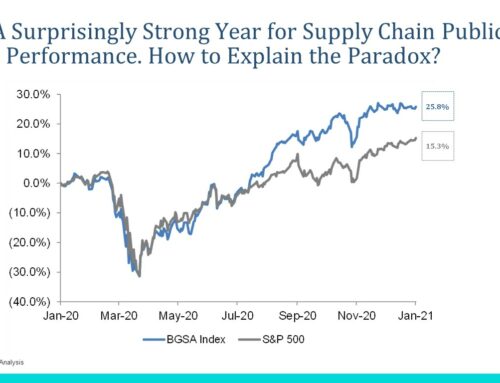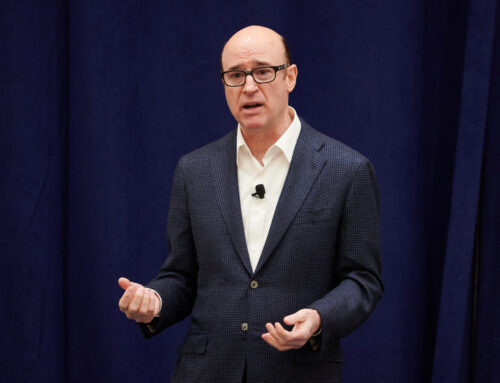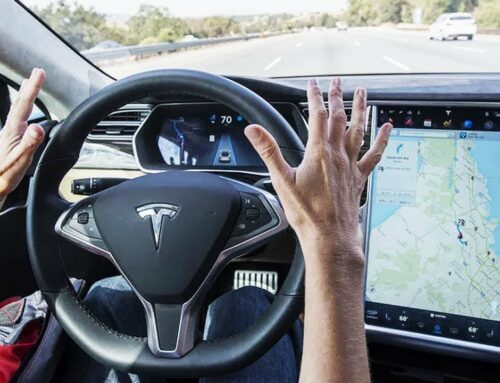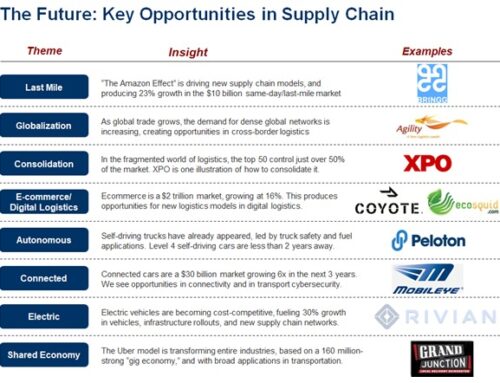Originally published at freightwaves.com on August 20, 2018.
Benjamin Gordon is CEO of Cambridge Capital.
Innovation in transportation has helped to shape our world in powerful ways. In 1869, Leland Stanford drove the Golden Spike into the ground in Utah, creating the first coast-to-coast railroad. In 1956, Malcolm McLain refitted an oil tanker to carry 58 shipping containers from Newark to Houston. Both of these breakthroughs helped the US to build a world-class infrastructure and lead the global economy.
Today, we are in the early stages of a powerful technology disruption that will reshape our world in even more significant ways. How will drones shift freight patterns? Will self-driving trucks take over the roads? Can 3-D printers enable companies to compress their supply chains? Will “the Amazon effect” spark a new ecosystem in automation? Who will dominate the last mile?
The Last Mile
Amazon just announced its largest acquisition to date: the $14 billion purchase of Whole Foods. Why did they do it?
Some analysts believe Amazon will now look to disrupt the food industry. Others believe Whole Foods will represent a strategic shift to retail locations. But what if they’re all wrong? What if Amazon’s real intent was to gain a network of distribution centers that blankets the country? Amazon is building an ecommerce fulfillment machine. The company is seeking to provide same day, and in some cases, same-hour fulfillment. But how can they do so without a global network of warehousing locations, across all major markets?
Enter Whole Foods. With 465 stores, Whole Foods has a footprint throughout the country. With a network of distribution centers, Whole Foods can give Amazon entrée into every major market. Imagine if the next time you buy from Amazon, you got it in an hour, fulfilled directly from a Whole Foods location?
The next issue is robotics. What if Amazon decided to use its investments in automation to slice the labor costs in the food business? The food industry employs over 3 million people. With Amazon’s labor-saving technology, could they cut those costs and accelerate the speed at which Amazon can deliver your order to your doorstep?
And a third issue is reverse logistics. It costs 10x as much for products to go backward in the supply chain in comparison with forward. When you return a product, the company loses money. With 465 locations, can Amazon find a way to slash the cost of reverse logistics? In the end, for Amazon it may be all about logistics and the last mile.
Drones
3 years ago, Jeff Bezos was mocked for his prediction that drones would be capable of commercial deliveries. What was his timeline? He said it would take 5 years.
Today, that moment has already arrived. We are 2 years ahead of schedule. Who will the winners be in the drone market? One candidate is the commercial drone delivery business. Already, drone companies exist with the capacity for 1,000 mile trips, with a 50-pound payload. Imagine what a drone network could do for last-mile logistics!
Will drones replace trucks, reduce road congestion, and help customers get their ecommerce purchases faster?
Self-Driving Trucks
This year, we have seen a flurry of activity around self-driving cars. Intel bought Mobileye for $15 billion. Lyft and Waymo formed a partnership to collaborate on self-driving cars. Uber acquired Otto for more than $600 million, less than a year after it was founded. Clearly we are in the midst of an arms race for this crucial technology.
But what about trucks? It turns out that self-driving technology already exists. In the mines of Australia, Komatsu has been running self-driving trucks. Early adopters have been able to demonstrate that the technology works.
Here in the US, we are watching technology companies take incremental steps toward this vision. Peloton, for instance, is providing companies with machine-to-machine communication that allows trucks to draft off one another, like bicycles in a race. When the first truck brakes, the second, third and fourth trucks can follow in sequence.
Who will be the first to come up with a self-driving truck that can serve a mass market?
In conclusion, the pace of change is faster than we’ve ever seen in logistics and technology. Over $5 billion has been poured into this sector. And it’s just beginning.
Smart technology entrepreneurs will continue to focus on the supply chain, because it is a large, target-rich market. And smart supply chain companies are making investments to ensure they will be ahead of the curve. For instance, the UPS Strategic Enterprise Fund has invested more than $400 million in disruptive technologies and businesses, ranging from drones to e-commerce fulfillment software.
For the winners, our industry faces a bright future!










